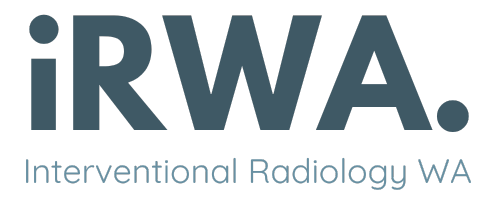Women’s Health
Interventional Radiology can provide major benifits specific to women's health issues. These minimally invasive techniques use imaging guidance (such as ultrasound, CT, or fluoroscopy) to treat conditions.
At iRWA, the team work closely with gynecologists to ensure the procedures are effective, lasting and safe.
Interventional Radiology can allow women to avoid more invasive surgical options, providing faster recovery, reduced pain, and fewer complications. Interventional radiologists often collaborate with gynecologists and other specialists to manage these conditions, offering effective, minimally invasive solutions.
Procedures
-
Uterine Artery Embolisation (UAE), also known as Uterine Fibroid Embolisation, is a minimally invasive, non-surgical procedure to treat uterine fibroid or adenomyosis, performed by an Interventional Radiologist.
Fibroids are benign growth in the uterus that can cause heavy periods, pain, or pressure on nearby organs.
Adenomyosis involves the abnormal growth of uterine lining tissue into the muscular wall, leading to heavy and painful periods.
UAE works by blocking the blood flow to the affected areas, causing them to shrink while preserving the uterus.
-
Ovarian vein embolisation (OVE) is a minimally invasive procedure designed to close off alfunctioning veins. By preventing these veins from becoming engorged with blood, the treatment alleviates the pain and discomfort caused by pelvic congestion.
-
A percutaneous nephrstomy is a soft flexible tube placed across the skin into the kidney that permits the drainage of urine into an external drainage bag. The ureter is the structure that connects the kidney to the bladder. A ureteral stent is a plastic tube that allows for drainage of the kidney into the bladder bypassing a blockage.
These procedures can be performed in under 60 minuets and are typically placed when the drainage for the kidney is blocked. A blocked kidney can result in pain, risk of infection, and risk of kidney damage.
Conditions
Some of the key women-specific conditions treated by iRWA’s specialists include:
-
Condition: Benign tumors that develop in the uterus, which can cause heavy menstrual bleeding, pelvic pain, and pressure.
Procedure: Uterine Fibroid Embolisation/Uterine Artery Embolisation (UFE/UAE) is used to block the blood supply to the fibroids, causing them to shrink and relieving symptoms such as bleeding and pain.
-
Condition: A condition in which the inner lining of the uterus (endometrium) breaks through the muscular wall of the uterus, leading to heavy, painful periods.
Procedure: Uterine Artery Embolisation (UAE) can be used to reduce blood flow to the uterus, decreasing pain and heavy menstrual bleeding.
-
Condition: Chronic pelvic pain caused by varicose veins/venous insufficiency in the pelvis .
Procedure: Pelvic Vein Embolisation/Ovarian Vein Embolisation uses coils and embolic agents to close off the dilated/incompetent veins, relieving symptoms.
-
Condition: Blockages in the urinary tract, which can lead to hydronephrosis (swelling of the kidneys) or difficulty urinating.
Procedure: Percutaneous Nephrostomy or Ureteral Stenting is used to relieve blockages and ensure proper urine flow.
-

What We Do
-

Men's Health
-

Cancer Treatment
-

Vascular Access
-

Musculoskeletal
